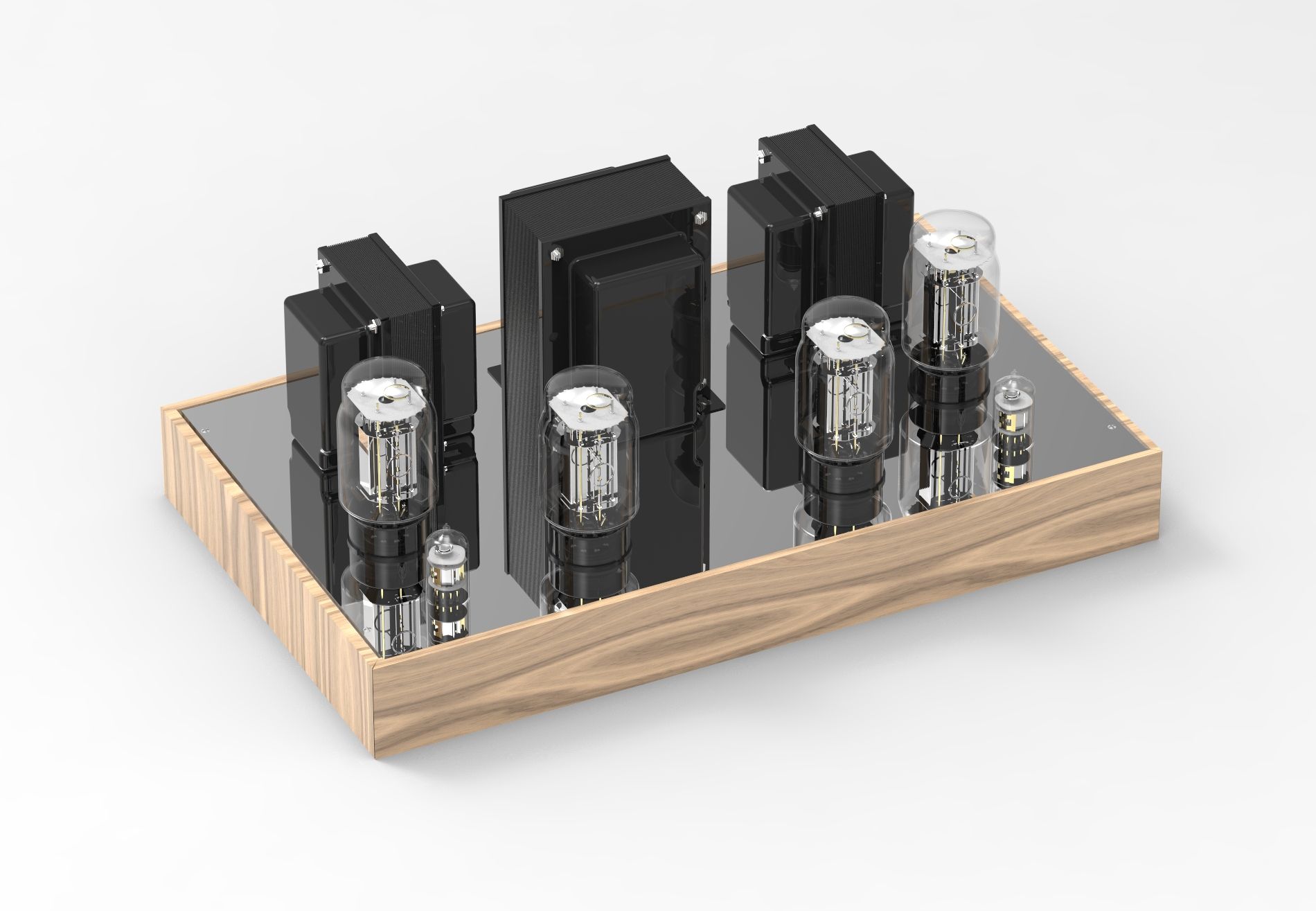Oddwatt Amplifier Assembly

In 2016 I built a sound system including speakers, preamplifier, subwoofers, and amplifier. I chose a tube amp design based on the "Oddwatt" design by Bruce Heran. If you want your own tube amplifier design, I highly recommend checking out his website here. Bruce is very helpful and active on various online audio forums and I think he has designed a great amplifier in the Oddwatt.
I had a very specific style in mind when I built my amplifier, so I decided to build it myself rather than buy a pre-built amplifier.
For both the preamplifier and the amplifier designs, I started with a metal Hammond enclosure. This was a cheap way to acquire a metal box which I could augment with wood panelling and an aluminum top cover. Hammond also publishes CAD models for all of their enclosures. This was helpful as I usually mockup my projects in CAD before I build them myself.

Using the CAD files provided by Hammond, I was able to layout and design the major components of the amplifier in CAD. After a few iterations, I arrived at the following layout:

The original Oddwatt is designed as two monoblocks. I combined the power supply transfer for both blocks into one.
Using the CAD files, I had a local shop water-jet holes into the aluminum top cover for the transformers and tubes.

The 6mm aluminum plate was too thick for the sockets to mount flush, so I milled out the bottom of the plate to allow each socket to sit flush.


Once I test-fit everything, I sanded down the aluminum to a matte finish and had it anodized in black.



Edcor transformers have a signature blue color, but I wanted the transformers to be black. I removed the transformer covers and had them powder-coated in black. A local shop was willing to put them in with another bulk order and power-coated them for cheap.
Once the sockets and transformers were mounted, it was time to begin wiring. The wiring is ugly, but functional. I used point-to-point wiring as much as possible. I mounted all of the components to the bottom of the aluminum cover whenever possible.

I originally used switched-mode power supplies to provide 12VDC for the tube filaments. I've since removed them and run AC power straight from the main power transformer to the filaments. The noise floor was reduced with this change and I have had no issues with hum.
I built some wood paneling out of teak hardwood and affixed it to the Hammond enclosure.




The back panel has outputs for 4, 8, and 16 ohm speakers. It also has a key switch to enable feedback (I usually leave it off) and measurement points/potentiometers for biasing the constant current source.

First shot of the complete amplifier:
